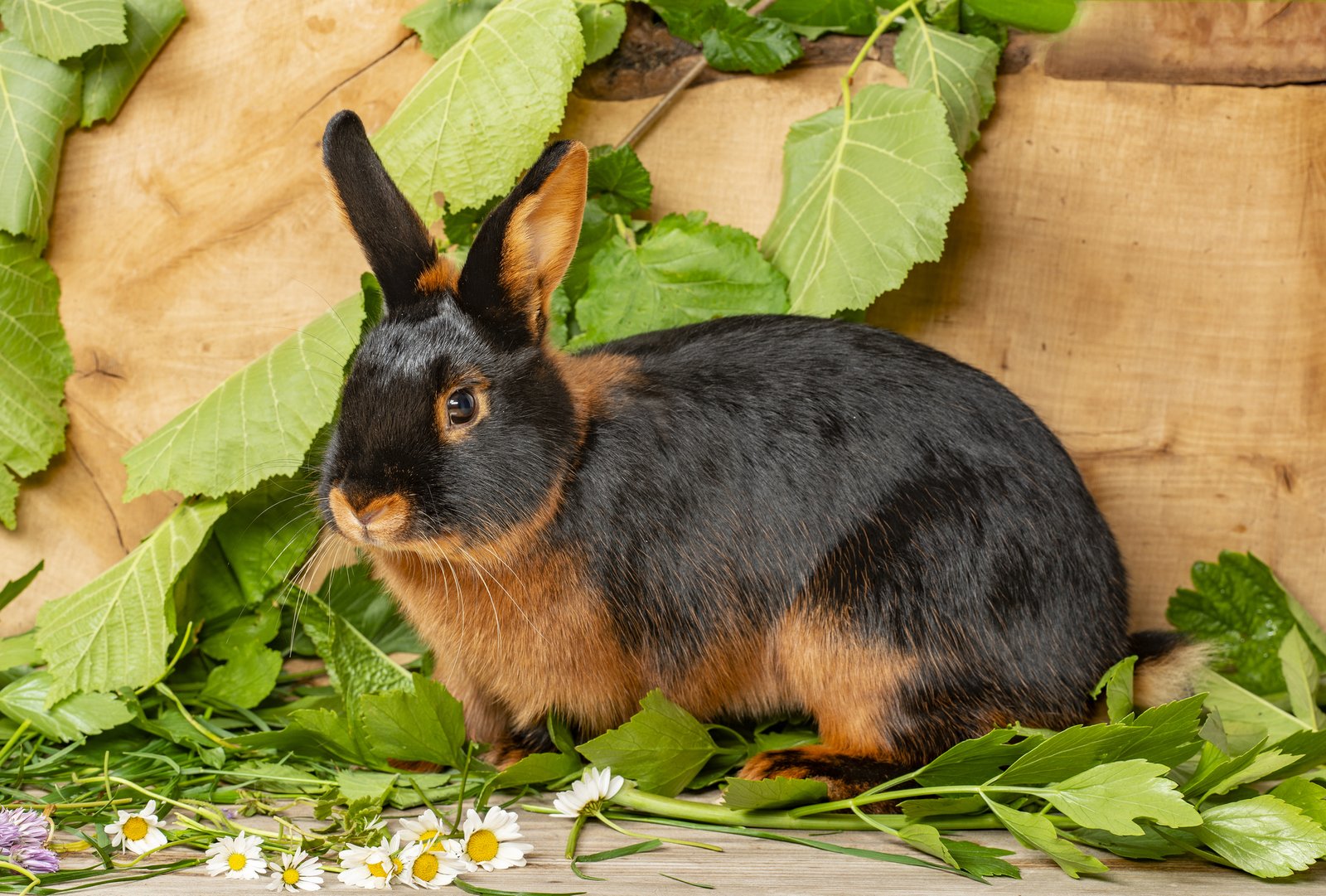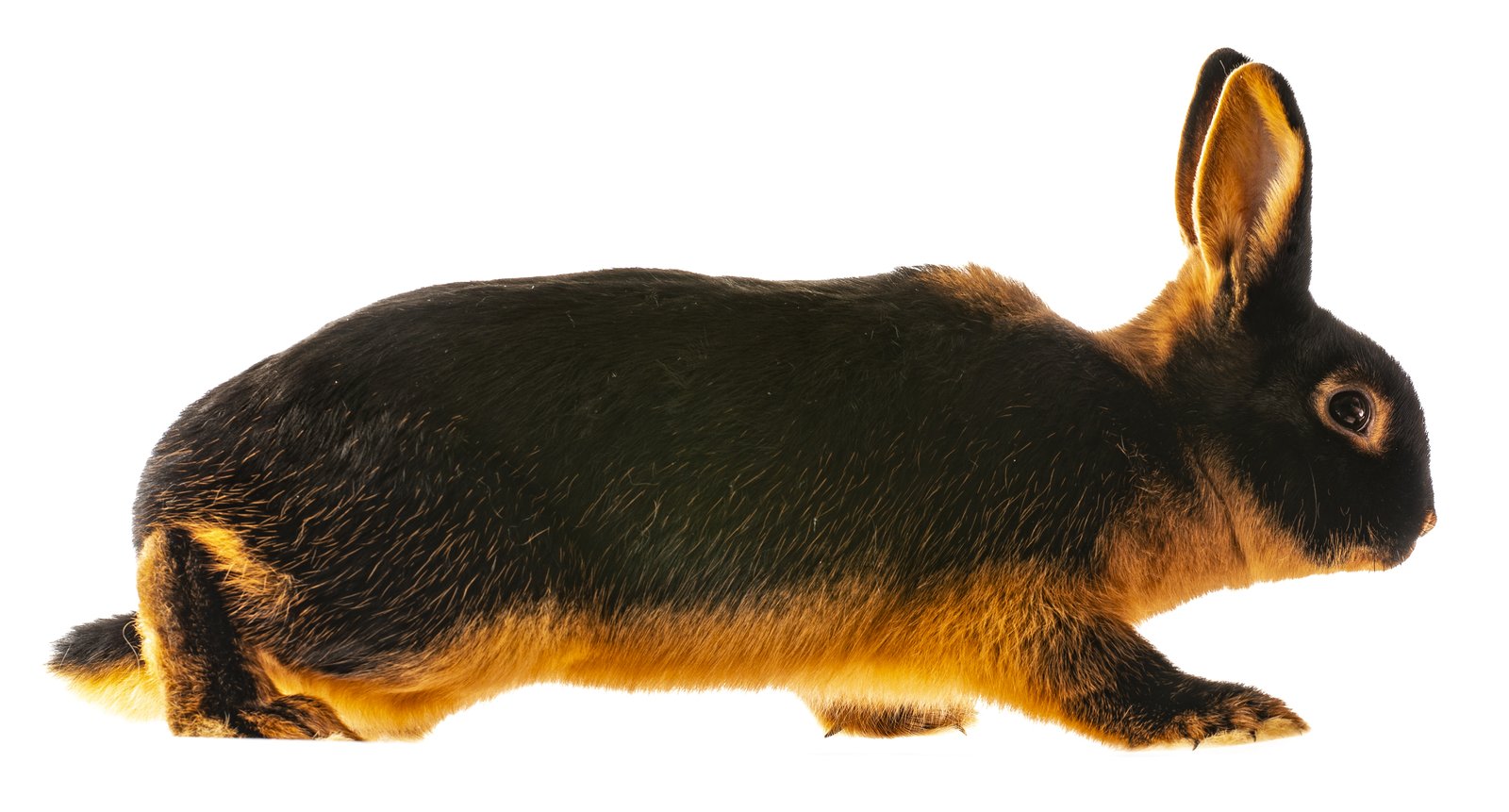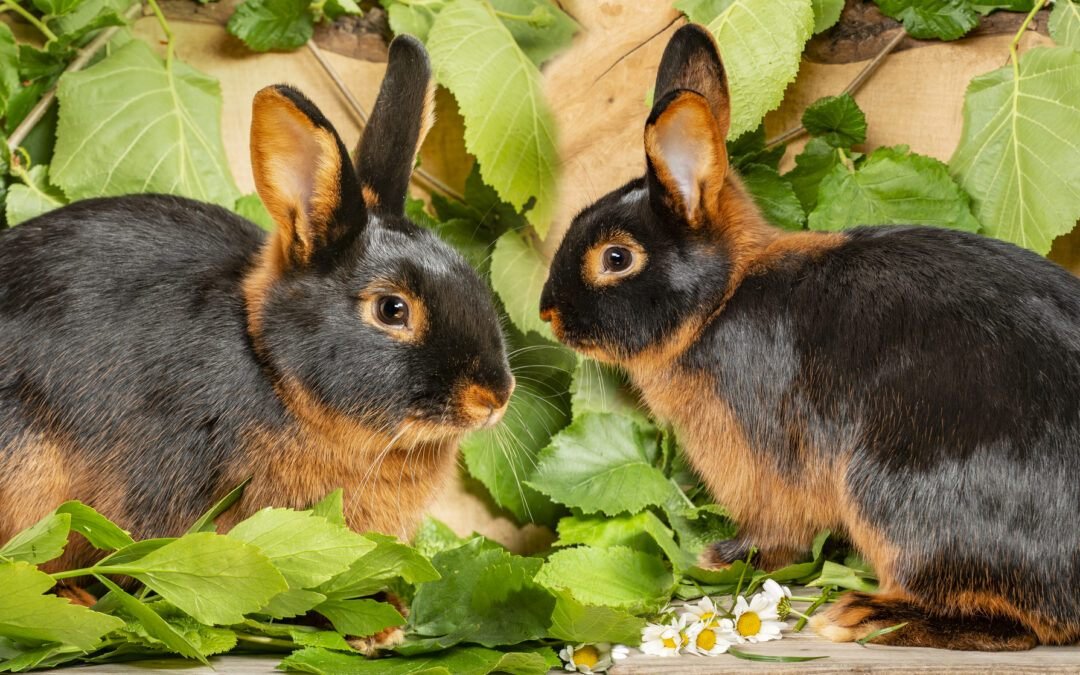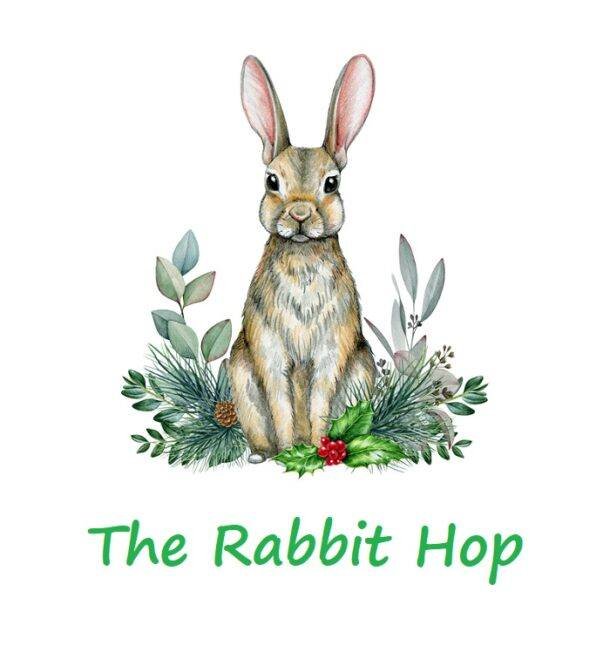Tan rabbits have unique red-orange patterns on their coats, making them famous. But besides their coats, these bunnies are also excellent pets. They are friendly to their owners and sociable with other rabbit companions. In this post, you will discover if a Tan rabbit breed is suitable for you. Keep on reading to learn more!

Facts about Tan Rabbits
|
Body Size |
Small |
|
Body Weight |
4 lbs to 6 lbs |
|
Body Shape |
Full-arched |
|
Lifespan |
8 to 10 years |
|
Colors |
Black, blue, chocolate, and lilac |
|
Similar Breeds |
|
|
Best Suited for |
Couples, families with older children, singles, first-time owners |
|
Origin |
United Kingdom |
Background and History
Tan rabbits originated in the English County of Derbyshire in the United Kingdom in 1887. Breeders were challenged to breed wild rabbits with domesticated ones. But they should attain the features of domestic bunnies. Thus, they bred the wild European with Dutch rabbits, resulting in the Tan bunnies.
The initial color of the Tan rabbits was black. Hence, they were called the Black and Tan breed. Blue-colored Tans started to appear after the breeders paired up a Sooty Fawn doe and a black Tan buck. These varieties dominated during World War I. In 1891, the first club for Tans was established. It was the predecessor of the National Tan Rabbit Club we know today.
During the 1900s, these bunnies arrived in the United States. The chocolate Tans were developed, followed by the lilac varieties. However, they had cobby features similar to the Dutch rabbits. Unfortunately, most breeders preferred Tan rabbits with longer limbs and more refined bones. They started breeding the Tans with the Belgian Hares to get hare-like features.
It was one of the earliest breeds recognized by the National Pet Stock Association. It is known as the American Rabbit Breeders Association (ARBA) today. Clubs promoting the breed also appeared. One of these is the American Tan Rabbit Specialty Club.
In 2003, a Tan rabbit breed won the best show at the 80th ARBA Convention in Witchita, Kansas. After the event, the breed became more popular on rabbit shows. ARBA currently accepts four varieties of the breed: black, blue, chocolate, and lilac.
Features of Tan Rabbits
A Tan rabbit breed has an average weight of 4 lbs to 6 lbs. However, a buck can only reach 5 ½ lbs, but a doe can weigh up to 6 lbs. This bunny has a full-arched body. The arch starts at the nape of the neck, running continuously to the shoulders and hips. Like a hare, it has a lean, short, and well-balanced body. Its big, upright ears are erecting at its head, causing the bunny to look intelligent and alert.
Besides the intense coloration, a Tan rabbit has flyback fur with a glossy finish. The red-orange highlight is present in all coats, such as black, blue, chocolate, and lilac. An intense deep red on the bunny’s chest and the tail is also noticeable. On the other hand, the patterns are located at the nostrils, around the eyes, belly, tails, top of the feet, and belly.

Temperament and Behavior
Friendly and sociable, the Tan rabbits are known as excellent pets. They love to spend time with their owners, but they are not as affectionate as other rabbit breeds. These bunnies don’t like to be petted and stroked for too long. However, they would thrive if they had rabbit companions.
As an active bunny, the Tan rabbit breed is unsuitable for children and seniors. They can easily escape, especially if not appropriately supervised. These bunnies need to have more time outdoors to exercise and play. Thus, Tans need owners can adapt to their active lifestyle. Since they are also curious pets, they love exploring and playing with toys.
Tan females can be aggressive at particular seasons because of their raging hormones. These bunnies may get along with smaller household pets but are scared of bigger pets like cats and dogs. Since they are intelligent creatures, you can teach them some tricks and games. They can come to you when you call them to have their food.
Grooming Tan Rabbits
Fortunately, tan rabbits are easy to groom because of their short furs. Their unique coats don’t need special care. But you must brush them at least once weekly to remove the loose hairs. You must groom them more often when shedding to prevent them from ingesting their furs.
Besides grooming your bunny’s coat, it is also vital that you trim its nails at least once a month. Bent and long nails can cause injuries and accidents in a Tan rabbit breed. Never use scissors or human nail cutters. Aside from an uneven cut, you may also accidentally trim the quick in your bunny’s nails. If you are hesitant to groom your pet, you can bring it to a groomer to do the job.
Cleaning your rabbit’s ears will also prevent it from suffering ear infections. Instead of using a chemical solution, you can use water and a soft cloth. Dampen the cloth with water and wipe its ears to clean them. If you are dealing with stubborn earwax, use an ear-cleaning fluid recommended by the vet. Put a small amount in your bunny’s ears and gently massage its ears until the earwax dislodges.
You must also take care of your bunny’s teeth by ensuring it’s not too long. Giving your pet enough hay can help strengthen and trim its teeth. You may also provide it with twigs, branches, and toys that it can chew safely. If your pet has an overgrown tooth, bring it to the vet immediately.
Proper Diet
A Tan rabbit breed must have a proper diet. Its diet must be at least 70% to 80% of hay. Besides high-quality hay, you can also provide it with fresh grass occasionally. For young bunnies, you can give them alfalfa hay. It has components that are good for the growth and development of young bunnies. But as your pet grows older, you must move it to timothy hay. Since alfalfa is rich in calcium, it can be dangerous to adult rabbits.
In addition to hay, you must provide leafy greens to Tan rabbits. They are rich in vitamins and minerals, keeping your pet healthy. Aside from that, leafy greens are also rich in water. Thus, they improve the motility of your rabbit’s guts. Cilantro, broccoli greens, and romaine lettuce are suitable for rabbits. However, small amounts of parsley, kale, and collard should be given.
You can also add pellets to your pet’s diet. But ensure that they are high-quality. As much as possible, they should not contain crunchy things, dried fruits, nuts, and seeds. When choosing pellets, they should have 22% crude fiber and 14% fat. But as a reminder, you should not replace hay with pellets since they are still what your pet needs.
Treats are good rewards for your bunny’s good behavior. But aside from that, they also provide variations to your pet’s diet. Aside from being delicious, treats must remain healthy. Instead of giving sweets to your pet, a slice of fruit is a better option. However, you must provide treats for your pet in small amounts only. Also, they must be fed these foods sparingly.
Habitat for Tan Rabbits
Although Tan rabbits are small, they need at least 12 feet of enclosures. These bunnies need large spaces where they can roam and stretch around. It would also be better to provide them with a separate exercise area. You can put tunnels and platforms so they can exercise and play around.
Besides the hutch, you must also provide supplies for your pet. Everything that it needs should be inside the cage. Place comfortable beddings where it can rest, such as hay or straw. Don’t forget to place its food bowl and water bottle inside the cage. You can also put some toys to keep your bunny busy.
If you want to let a Tan rabbit breed live inside your home, keep in mind that it is a curious pet. Indeed, it would bite wires and cables, thinking they are roots and twigs. Hence, you must make your home rabbit-proof first. It would be better to rearrange the furniture, making it inaccessible.
For an outdoor bunny, you must place its enclosure where there is enough shade. It must be protected from direct sunlight to prevent heatstroke. Also, make sure that your pet is secure from lurking predators. Please put the hutch near your house to easily monitor its condition.

Health Issues of Tan Rabbits
Heatstroke
Like other rabbit breeds, Tan rabbits may experience heatstroke. Since these pets have few sweat glands, their bodies cannot regulate their temperature. Exposing them to heat is very dangerous. Once the temperature exceeds 40.5 Celsius, your rabbit may suffer from heatstroke.
Most cases of heatstroke happen when the rabbits are trapped in warm areas. Their enclosures may become too warm, or not enough shade could protect them. This condition may also occur if these furry pets are trapped inside a hot room. Signs of heatstroke include reddening of ears, lethargy, and difficulty breathing.
If your pet experiences heatstroke, bring your bunny to the vet immediately. To treat your bunny, the vet may use cold water, fans, or fluid drip to cool down your pet’s body. Medications may also be given, especially if the heatstroke leads to worse conditions.
Head Tilt
A Tan rabbit breed may also suffer from head tilt. It is a condition common to all rabbits caused by ear infections or parasites in the brain. Rabbits that suffer from head tilt lose their balance. Other causes of head tilt include ear mites, poisoning, or a brain or ear tumor. Head pain, injury, neck pain, and inflammation may also lead to this condition.
You must also check other symptoms so the vet can determine the head tilt’s primary cause. Bunnies with head tilt may also walk in circles, be unable to stand, or show their third eyelids. The vet must first determine the cause of the head tilt to provide the proper treatment.
Frequently Asked Questions
How much does a Tan rabbit breed cost?
An average Tan rabbit breed may only cost between $30 and $75. However, adopting this bunny can only cost you at least $10. But if you are looking for a show rabbit, it may reach up to $200 to $400. Besides the rabbit itself, you must also spend on its hutch, food, and supplies.
Are Tan rabbits ideal pets for new rabbit owners?
Since Tan rabbits don’t need special care, they are excellent pets for new rabbit owners. However, you must be prepared to keep up with their active lifestyle. These pets are friendly, but remember that they don’t want to be held or petted for too long.

Conclusion
Tan rabbits are not only excellent show rabbits. But they are also good pets. Besides being friendly, these adorable bunnies are also intelligent companions. However, they need proper care to grow healthy and happy. As active breeds, they are suitable for singles, couples, and families.



